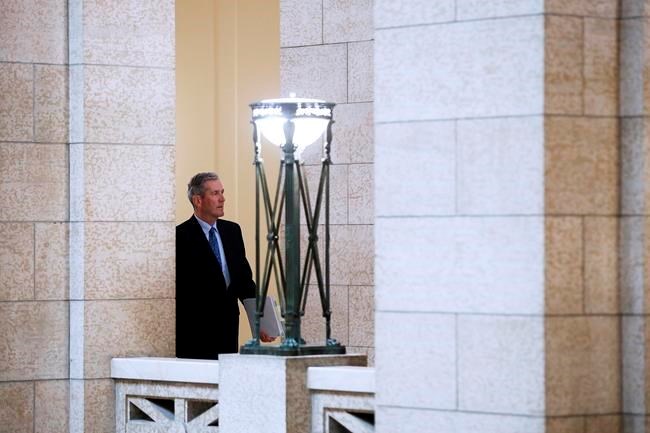WINNIPEG — A large brick building that stands on a hill overlooking a small community in southwestern Manitoba casts an immense shadow.
The Birtle Indian Residential school reminds survivors and their families of the children who were forced to go there and those who never came home.
“(The survivors) see the buildings and it’s a reminder of what they went through,” says Chris Benn, a councillor for the nearby Birdtail Sioux Dakota Nation.
As more provinces join the federal government in committing funds to uncover that history, anthropologists and Indigenous leaders predict the effort could be complicated. They warn it becomes even more difficult as many of the sites, including that where the Birtle school stood, have been sold and are private property.
A national movement to find and commemorate unmarked graves began after the Tk'emlups te Secwepec First Nation announced last month that ground-penetrating radar had detected what are believed to be the remains of 215 Indigenous children at the former Kamloops Indian Residential School site.
Birtle is one of 17 residential school grounds and 114 day school sites in Manitoba that could hold unmarked children's graves.
“One of the most important things to consider is who owns the land associated with residential schools,” says Emily Holland, a forensic anthropologist and professor at Brandon University, during an online panel with the Assembly of Manitoba Chiefs on Friday.
Holland is part of a project investigating unmarked graves at the former Brandon residential school, about 250 kilometres west of Winnipeg. Since 2012, researchers have been working with the Sioux Valley Dakota Nation, which owns the land where the school once stood.
They've identified 104 potential graves. Sioux Valley Chief Jennifer Bone has said only 78 are found in burial records.
More than 50 are on a privately owned campground.
Bone told the panel there have been ethical, legal and logistical challenges in locating the remains. But it’s important to "restore the identity of our children who never returned home," she said.
The Truth and Reconciliation Commission said at least 338 children died at residential schools in Manitoba.
The federal government recently promised $27 million to find graves across the country. Manitoba's government announced Monday that it will commit $2.5 million to the effort. Saskatchewan said last week that it will put up $2 million.
Arlen Dumas, grand chief of the Assembly of Manitoba Chiefs, said the funding is a good first step.
“It will certainly take far more of a commitment and a collaborative long-term relationship with our governmental partners at all levels to step up and engage in this work,” Dumas said in a news release.
Benn says many survivors remember the farm work they were forced to do and the fellow students who never came home.
The Birtle Residential School, about 310 kilometres northwest of Winnipeg, ran between 1931 and 1972. Indian Affairs correspondence in 1942 said two boys were injured in a truck accident after the principal sent 70 students in one vehicle to do farm work.
For years after the school's closure, people would go to the site to perform ceremonies, locals say. That was no longer permitted after the building was sold in 2015.
A newspaper reported in 2019 that the new owner bought the land on Kijiji not realizing he'd purchased a residential school. Community officials confirmed the account and said the same person still owns the land, but no work has been done on it and visits are discouraged.
Terence Clark, an assistant anthropology professor at the University of Saskatchewan, is part of a team using ground-penetrating radar to locate remains on land belonging to the Muskowekwan First Nation in Saskatchewan.
That residential school site is accessible, but Clark says not all sites are. Many possible graves sit below farmers’ fields and, even if researchers get access to the land, the search has to be dictated by harvest season.
He also worries about situations, like Birtle, where researchers may not receive permission to go onto privately owned land.
“They do have the right to turn us away,” Clark says. “But I think at some point once the surveys (identifying areas with remains) are done, the government needs to think hard about what they are going to do with these properties.”
Clark says there won’t be a single template for searching and ground radar won’t be the right tool in each case. He also cautioned it will take a lot of time to do the work.
“It’s difficult under the best circumstances."
This report by The Canadian Press was first published June 21, 2021.
Kelly Geraldine Malone, The Canadian Press

